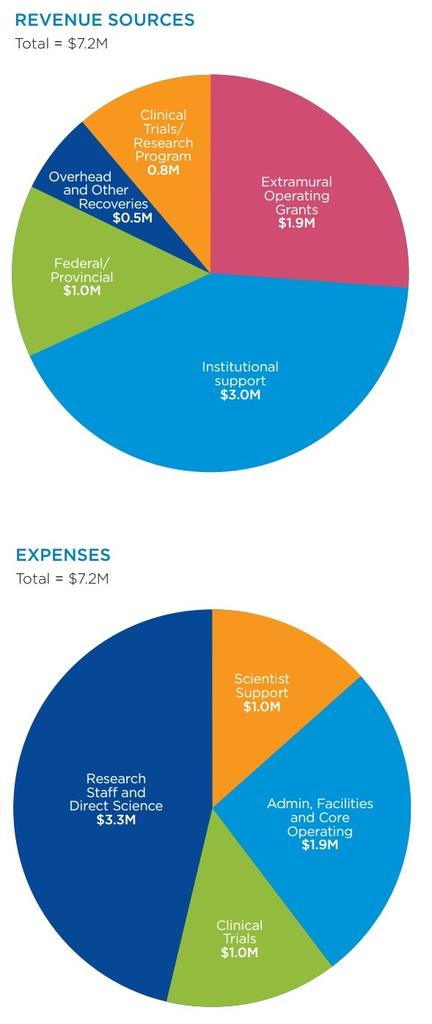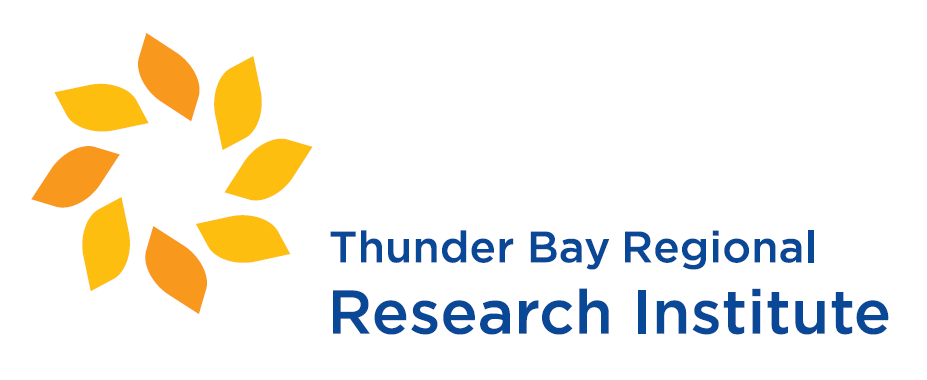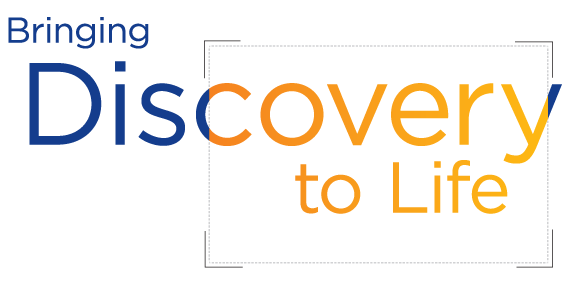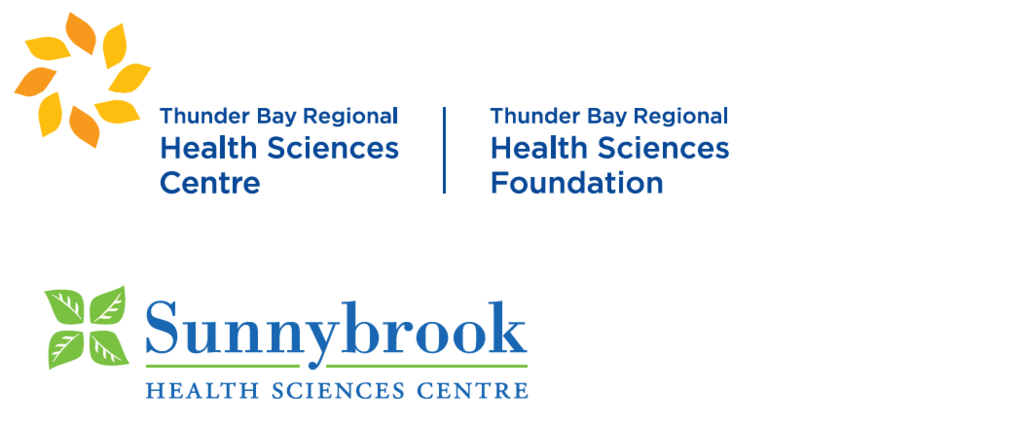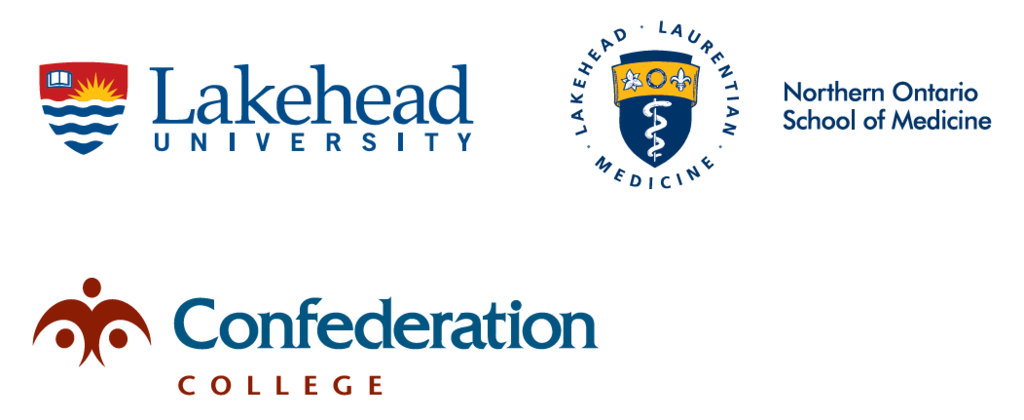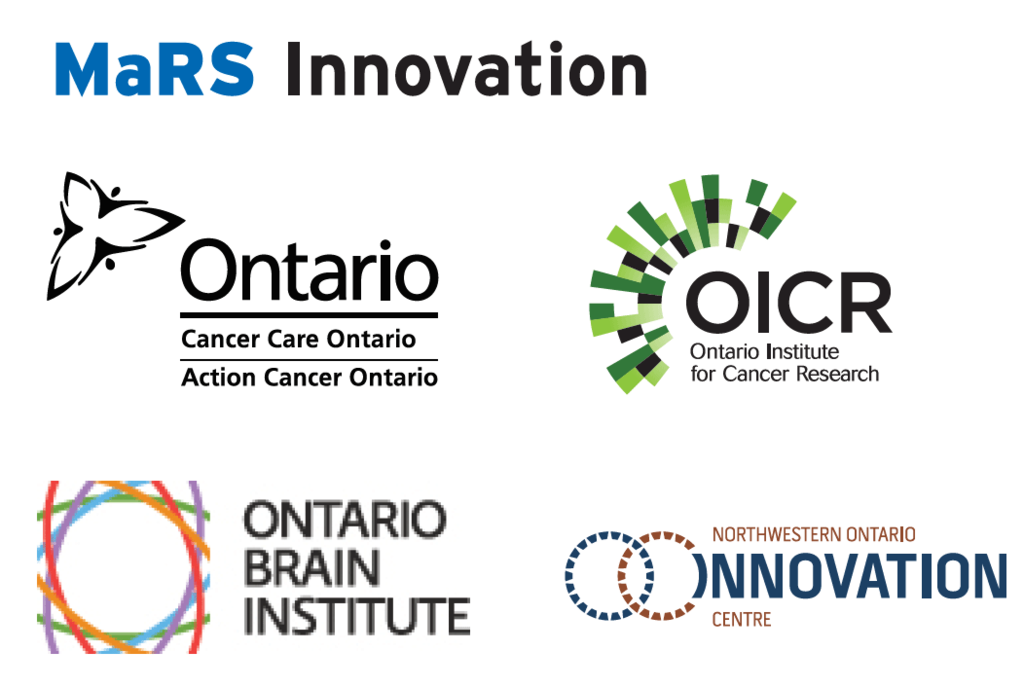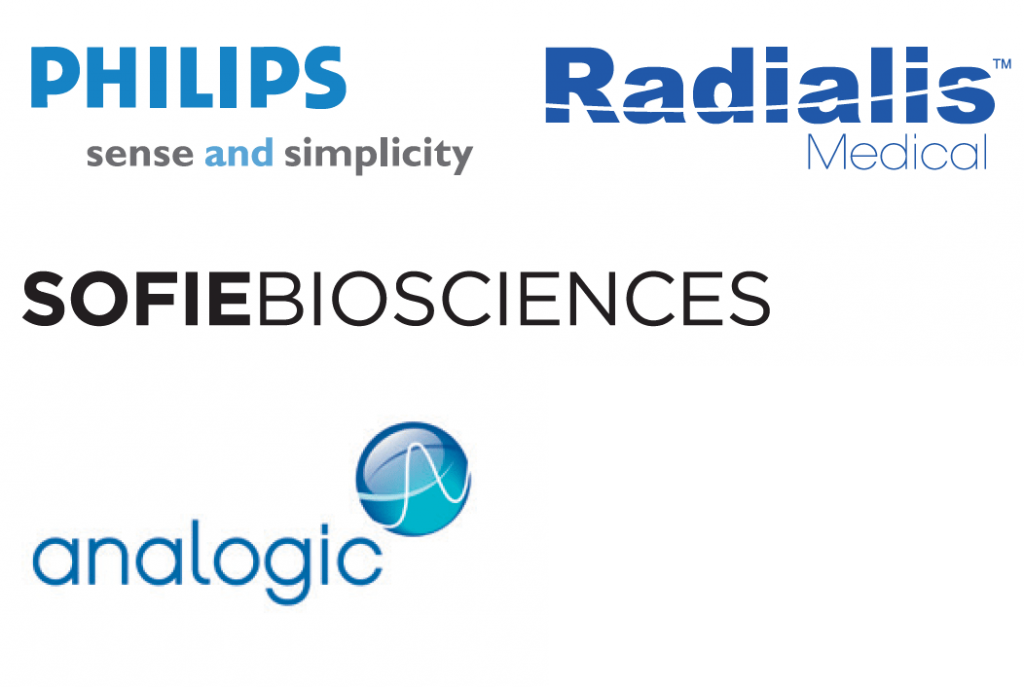Impact Through Excellence in Imaging
Impact Through Excellence in ImagingEnabling of Research Strategic to TBRHSC
Enabling of Research Strategic to TBRHSCEconomic Growth and Sustainability
Economic Growth and SustainabilityThunder Bay Regional Research Institute
Our Mission
To discover, translate through clinical trials, and bring to market advances in the prevention, diagnosis and treatment of disease.
Our Vision
Internationally recognized for patient centred research focused on medical imaging
Our Values
Patient-centredness
Integrity
Excellence
Respect
Our Last Five Years in Review
With this Annual Report we close the final chapter of the Thunder Bay Regional Research Institute’s 2012-2016 Strategic Plan. The plan outlined three goals in our mission to create a patient-centric research program that would benefit the residents of Northwestern Ontario and create new and innovative diagnostic techniques to benefit the world. We are pleased to announce that we’ve been successful in that mission.
Our accomplishments include (to name just a few) the installation and commissioning of our new cyclotron, the formation of two spin-off companies (XLV Diagnostics Inc. and Radialis), our rise to 35th of the Top 40 Research Hospitals in Canada, and an ever-expanding roster of clinicians who are partnering with us to provide better care for our patients.
Creating a research institute is an extremely difficult proposition, especially when you are building something new that doesn’t fit the traditional mould. What we’ve accomplished so far is astounding. We have formed a successful research hub outside of a major metropolitan area, focused on innovative ways to collaborate and build capacity, and – most importantly – remained patient-centric. Of course, none of this would be possible without our numerous funding partners.
The next Strategic Plan will guide us over the next five years as we build upon these successes.
Leader Messages
Message from the Chair
Our Impact on Northwestern Ontario
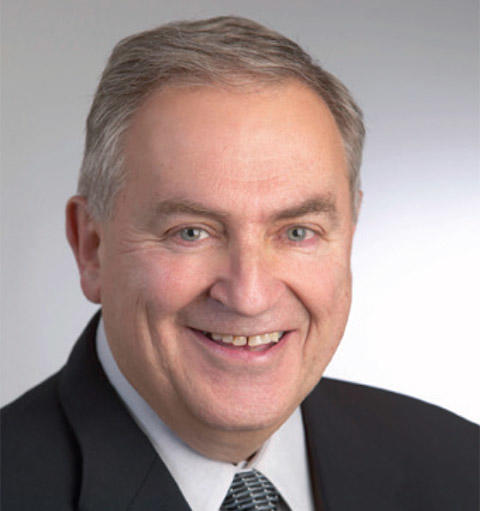
“Why is having a research program in Thunder Bay important?”
For those of us involved in the Thunder Bay Regional Research Institute, the impact of local health research is obvious: it helps makes Northwestern Ontario healthier, wealthier, and smarter.
Our new cyclotron has become a symbol of our success to date. Who could have even imagined 10 years ago we would be one of four hospitals in Canada with this level of incredibly useful technology? Being able to create our own medical imaging isotopes for research and patient care will eliminate delays due to shipping from southern Ontario. We are already seeing new probe development and international partnerships; we will soon see new economic benefits to the community. We have many people to thank, including our visionary funding partners who helped us get here.
Local research continued to have an impact in many ways in 2015. It is helping us improve care and access to health care for Indigenous peoples living in Northwestern Ontario, overcoming distance, language, culture, and other barriers. Clinical trials is another area of advancement. We have amalgamated the Clinical Trials program and the Clinical Research program to create the new Clinical Research Services, which will help strengthen our competencies and make clinical trials more accessible to patients. The medical device manufacturing industry we are helping to develop, the research opportunities we provide for students at Lakehead University, the Northern Ontario School of Medicine, and Confederation College as well as students from around the world, and the jobs we have created – these are just a few examples of how we have helped the region. We should all be proud of our role.
On behalf of the Board, I welcome our new CEO, Jean Bartkowiak. We look forward to working closely with him to develop our new Strategic Plan as we move forward into the next five years.

Dr. Gary Polonski
Chair
Message from the CEO
Looking forward to the Next Five Years

Our research teams have concluded a rather ambitious set of objectives – and, I may add, they’ve been quite successful. In our Strategic Plan 2012-2016 we implemented most of our targets including the installation of the cyclotron, enabling clinical research, and creating potential value through spin-off companies including XLV Diagnostics Inc. and most recently Dr. Alla Reznik’s Radialis Inc.
Our scientists have outpaced our goals in several areas. Our Research Institute is now recognized as a leader in several fields including high-intensity focused ultrasound (HIFU) and X-ray detector development. We are also supporting a growing clinical research cluster that is providing solutions to local health care challenges – solutions that often have global applications.
These accomplishments are thanks to the strong vision of our past CEOs, and our past and current Scientific Directors, Scientists, and of course our staff. Together, they’ve created a collaborative research environment that extends internationally, but begins with Lakehead University and the Northern Ontario School of Medicine. Our Research Institute is part of an academic health sciences centre that allows both the cross-pollination of ideas and a population base large enough to sustain a strong research program. Working together with academics, clinicians, industry partners, and our funding agencies has helped us develop a truly patient-centred research program that is unique to Northwestern Ontario.
I would like to take this opportunity to thank Dr. Bill McCready who served as Interim CEO before my arrival. His effective leadership and dedication to patient-centred research helped guide us across the finish line of our Strategic Plan 2012-2016.
Looking ahead, we are developing a new Strategic Plan that will be closely aligned with the Directions of the Thunder Bay Regional Health Sciences Centre’s Strategic Plan 2020 – a natural alignment for a program that aims to enable local research.
I’m excited to see where the next five years will take us…

Jean Bartkowiak
CEO
A message from the Thunder Bay Regional Health Sciences Foundation
Expanding our Reach
Innovative Research Conducted in Thunder Bay Provides Opportunity to Seek Philanthropic Support Beyond Northwestern Ontario
Scientists at the Thunder Bay Regional Research Institute are tackling big issues like cervical cancer screening, rehabilitation after stroke, and advanced techniques for cancer treatment.
They do not confine their work to Northwestern Ontario; although, certainly, their work is very much focused around the health care issues faced by the population here.
However, the innovative and ground-breaking work happening at our Research Institute has the ability to transform care across the world. Indeed, people in sub-Saharan Africa, Finland, or even China may benefit from the technology developed in Northwestern Ontario.
The Thunder Bay Regional Health Sciences Foundation recognizes the opportunity to engage with prospective donors outside of Northwestern Ontario to fund this revolutionary research. In February, with an enthusiastic and well-connected Board of Directors, an event was held in Toronto to showcase the tremendous work being done in Thunder Bay and provide an opportunity for continued discussion of philanthropic support. It is just the first of many discussions to be held with people outside of Northwestern Ontario to enable donations directly supporting research.
Research is the embodiment of hope. While geographic borders may distinguish where research takes place, they cannot contain hope. The Health Sciences Foundation, through the commitment of donors worldwide, will ensure that hope continues to flourish.
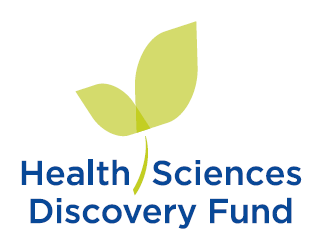
Goal 1
Impact Through
Excellence in Imaging
Focus on detectors, specialized MRI technology, molecular probes, and imaging guidance.
Recruit and develop critical mass of internationally excellent scientists and trainees.
Facilitate collaborations to increase success in scientific discovery, leading to first-in-patient trials and ultimately widespread distribution.
PET Molecular Imaging Laboratory Works Towards Cutting-Edge Diagnosis of Parkinson’s Disease
Currently, there are no definitive tests or confirmed biomarkers that can be used to diagnose Parkinson’s disease. However dozens of research teams around the world are studying Glucocebrosidase (GCase) enzyme levels in the brain, which are lower in people with Parkinson’s disease. A few of those research groups – including scientists at the Thunder Bay Regional Research Institute’s Molecular Imaging Lab – are using advanced positron-emission tomography (PET) imaging to detect the disease earlier and more accurately. This research aligns with our first goal of creating Impact through Excellence in Imaging.
“We hope to create a way to detect Parkinson’s disease early so that we can slow its progression and treat its symptoms earlier,” said Daniel Tesolin, a Master’s degree student who returned to Thunder Bay from the University of Ottawa to work with Dr. Chris Phenix at the Research Institute.
GCase activity seems to drop rapidly at the onset of early Parkinson’s disease and leads to a build up of neurodegenerative plaques or Lewy bodies that damage brain cells and cause the symptoms of Parkinson’s disease.
“By the time Parkinson’s disease is diagnosed, typically 60% of the cells in the areas of the brain that control motor function have already died,” Tesolin said.
Tesolin and Dr. Phenix have spent the last year developing radiolabelled probes that will bind to the GCase and “light up” during a PET scan.
“PET has the advantage of being super sensitive,” Tesolin said. “With PET imaging, you can easily attach a radioactive isotope to a potential imaging compound without changing its biological function. The amount of isotope is so microscopic there are virtually no side effects.”
In 2015, the team developed a new molecule that has the potential to show GCase during PET imaging. The next step is to radiolabel their probe with fluorine 18 (18F), a man-made radioactive isotope created using the new cyclotron in Thunder Bay. Dr. Shusheng Wang joined the team in early 2016, applying his chemistry expertise to the probe development.
“We modify the structures of the potential probe molecules to develop ones that have the best properties for a diagnostic PET imaging agent. If we find that we have good results, then we will use the cyclotron facility for radiolabelling (and then biological testing),” Dr. Wang said.
Tesolin said that his return to Thunder Bay and this research would not be happening at the Research Institute without our new cyclotron. “We would have to ship our 18F from Hamilton or Winnipeg, but that’s not efficient because it has a half-life of 110 minutes,” he said. “We need the cyclotron onsite for quick access to 18F.”
The next step is to do pre-clinical research with the radioactive PET tracers which, if successful, could lead to human clinical trials. Such techniques could also be used to unravel the molecular mechanisms of other diseases.
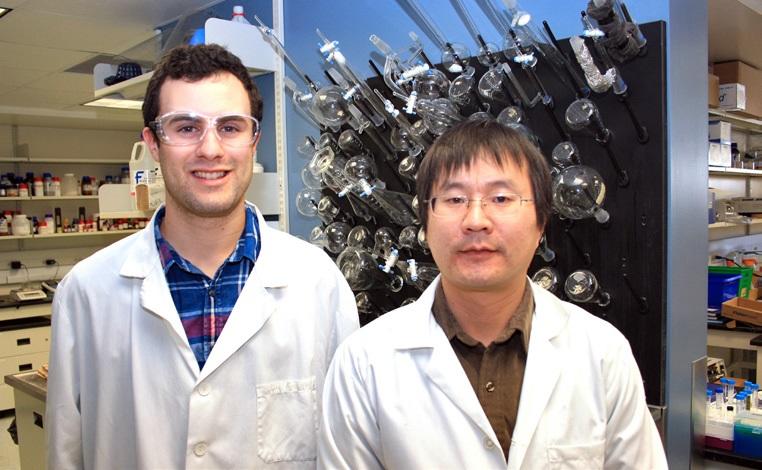
Daniel Tesolin and Dr. Shusheng Wang
PET molecular imaging laboratory works towards cutting-edge diagnosis of Parkinson’s Disease.
Dr. Pichardo Collaborates with SickKids to Develop New MRgHIFU Technique
“Collaborations are one of the most important parts of research,” said Dr. Samuel Pichardo, scientist at the Thunder Bay Regional Research Institute.
That statement grows truer every day as technological advances and increasingly specialized expertise is needed to bring new treatments and options for patient care to life. Facilitating collaborations to increase the success in scientific discovery – particularly in imaging – is one of the key objectives for the Research Institute.
Dr. Pichardo’s work is a prime example. As one of the recognized software leaders in the world for magnetic resonance-guided high intensity focused ultrasound (MRgHIFU), he is collaborating with the Hospital for Sick Children (SickKids) to develop a new non-invasive treatment method for premature babies to reduce the likelihood and the severity of brain injury, and in fact facilitating collaborations to increase success in imaging.
“Babies born prematurely are in danger of developing a condition called intraventricular hemorrhage, which can produce blood clots and induce a build up of fluid in the brain,” said Dr. Pichardo.
Usually this condition heals itself, but in some cases it can lead to swelling in the brain or a loss of blood supply to certain brain cells. In both cases, this can lead to brain injury and other medical conditions including cerebral palsy (CP).
Currently, only drainage of cerebrospinal fluid is offered as a treatment and there is not a well established technique for the treatment of the blood clot. A surgical procedure is extremely risky in these infants; since this can lead to brain injury as well, neurosurgeons at SickKids want to find a less invasive treatment method. It was actually Philips Healthcare, the company that supplied MRIs to both SickKids and the Thunder Bay Regional Health Sciences Centre, which connected the two.
Today, Dr. Pichardo is helping to develop technology in Thunder Bay that will safely destroy clots in the brain and reduce swelling without ever having to use a scalpel. If successful, it would mean fewer instances of long-term brain injury – and more happy, healthy babies.
Of course, developing this new technique requires several different steps. One of Dr. Pichardo’s students, Steven Engler, travelled to the Netherlands in the summer of 2015 to help develop new software to improve MRgHIFU imaging for faster, safer treatments in all situations.
As exciting as this research is, there are already plans at SickKids to develop similar techniques for non-surgical removal of brain lesions that can lead to epilepsy, and for destroying neuroblastoma tumours – one of the most common childhood cancers – in combination with radiation, surgery, or chemotherapy.
That expertise is being developed right here at our Research Institute.
“One day, a baby from Thunder Bay will be treated at SickKids using a technique developed right here,” Dr. Pichardo said. “That’s a pretty exciting prospect.”
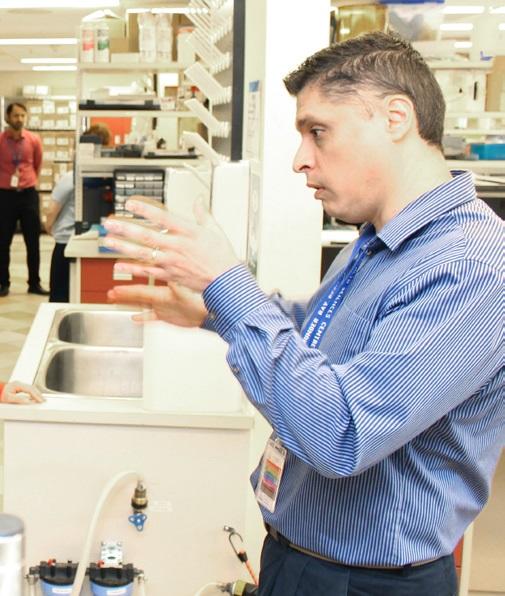
Dr. Pichardo collaborates with SickKids to develop new MRgHIFU technique.
Goal 2
Enabling of Research
Strategic to TBRHSC
Facilitate clinical research through an accessible, well managed, and sustainable infrastructure.
Encourage emergence of research champions to grow culture of research.
Enable clinical trials and clinical research in TBRHSC priority areas.
Clinician Researchers + NOAMA Grants + Research Institute Support = Better Patient Care
Opioid addiction. It’s an epidemic in Northwestern Ontario as it is in many places, and approximately 30% of pregnancies here are to women with an opioid dependency. That has prompted Dr. Naana Jumah, clinician scientist at the Thunder Bay Regional Research Institute and the Thunder Bay Regional Health Sciences Centre, to address the underlying problems and find solutions.
“Part of the challenge is the stigma attached to pregnant mothers struggling with addiction issues,” Dr. Jumah said. “In other words, it’s not just a medical problem, it’s a social problem. That makes it more difficult to find workable solutions.”
Two of Dr. Jumah’s research projects were funded by the Northern Ontario Academic Medicine Association (NOAMA), which distributes grants for local, physician-driven research to improve patient care. In 2015, Dr. Jumah began developing partnerships to build an integrated health delivery strategy for women with opioid dependency during pregnancy in Northwestern Ontario – the first of its kind in Canada. This year, Dr. Jumah and a team of clinician researchers aim to develop a curriculum that addresses the social determinants of Indigenous women's reproductive health. This is enabling research strategic to the Thunder Bay Regional Health Sciences Centre, including in the area of Indigenous Health.
NOAMA is supporting many clinician researcher projects in the region through funding. But there is an interesting – and exciting – dynamic developing in Northwestern Ontario, thanks to the Research Institute. Our scientists are providing clinicians with research resources and expertise to which they wouldn’t otherwise have access.
For example, there are two NOAMA-funded projects by local physicians who are both collaborating with scientist Dr. Mitch Albert, a world-leading expert in hyper-polarized (HP) gas MRI. Dr. Birubi Biman is investigating ways of using the technique to help diagnose and monitor treatment of lung disease. Dr. Ayman Hassan will investigate whether or not HP gas MRI can be used as a non-invasive method of testing for Alzheimer’s disease.
Last year, NOAMA funded research investigating two new cancer treatment techniques, one using magnetic resonance-guided high-intensity focused ultrasound (MRgHIFU) and the other using biomarkers. The results of all these studies could help thousands of people right here in Northwestern Ontario, not to mention millions of people around the world.
Thunder Bay is a truly interdisciplinary environment where biologists, chemists, physicists, engineers and medical doctors work closely together – that makes us unique. It’s created a collaborative research environment that, sparked by funding sources like NOAMA, is igniting local research and enabling true bench-to-bedside breakthroughs for improved patient care in Northwestern Ontario and beyond.
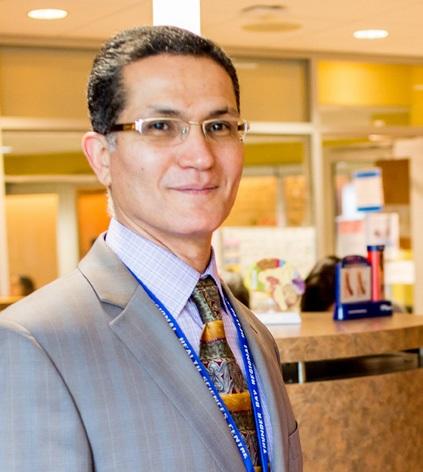
Dr. Ayman Hassan, Neurologist and Medical Lead, Stroke and Neurology Service at TBRHSC
ACCSS Research Finds New Ways to Increase Cervical Cancer Screening Among Indigenous Women
Why are cervical cancer rates so high among First Nations women?
We are starting to get a better understanding thanks to Thunder Bay Regional Research Institute – Lakehead University Research Chair Dr. Ingeborg Zehbe. She and a research team of over a dozen other healthcare professionals completed a study investigating the reasons behind these high cervical cancer rates and trying to find ways to overcome those challenges. The “Anishinaabek Cervical Cancer Screening Study (ACCSS) Community Update Report 2015” relates that, despite a dramatic drop in cervical cancer across Canada, rates among Canada’s First Nations women are 2 to 20 times higher than the national average.
“There are a number of structural barriers to care for Indigenous Peoples in Northwestern Ontario,” Dr. Zehbe said. Barriers to healthcare in general are well known and include geographical, cultural, and language barriers, though the details are not well understood.
In the case of cervical cancer screening, the study found that the cultural barrier plays a large part. “First Nations women avoid Pap tests due to its invasive nature,” Dr. Zehbe said. “We had to be aware of their strong sense of privacy – we had to find a way to provide screening that would be comfortable to them.”
As part of the research project, Dr. Zehbe offered women a swab kit and instructions for self-sampling. Once completed, the swab is sealed in its container and sent to the lab for testing.
The results so far are promising. The study found that participants were twice as likely to agree to screening if offered the self-sampling kit instead of a standard Pap test.
However, less than 25% of those women offered screening during the study accepted. Lack of appropriate health education was found to be the biggest reason why First Nations women avoid cervical cancer screening. Education sessions including the Wool Felt Project, in which women made felt balls meant to represent the HPV virus, make women aware of the importance of screening and how it helps reduce the risk of cervical cancer.
This study also underlines the importance of our Research Institute enabling research – including clinical research – strategic to the Thunder Bay Regional Health Sciences Centre. This type of research, which involved 10 regional First Nations, would have been much less likely to happen without our support and expertise. The lessons learned may also help lay the groundwork for overcoming barriers to improve other areas of Indigenous health in Northwestern Ontario – and perhaps across Canada.
http://www.tbrri.com/upload/documents/anishinaabek-cervical-cancer-study-repor.pdf

Dr. Nicholas Escott and Dr. Ingeborg Zehbe
ACCSS research finds new ways to increase cervical cancer screening among Indigenous women.
Goal 3
Economic Growth
and Sustainability
Create research and business jobs in Northwestern Ontario.
Develop clinical trials, cyclotron, and other business ventures to reinvest in research.
Partner with the Thunder Bay Regional Health Sciences Foundation in research fundraising.
Create value from intellectual property through spin-off companies and licenses.
Cyclotron Ships First Isotopes
Just over a year after the cyclotron was lowered into its bunker at the new Medical Services Building on Oliver Road, it produced its first fluorine-18 for the Thunder Bay Regional Health Sciences Centre. The isotope was used to calibrate the PET-CT scanner, ensuring that the scanner will properly identify cancer cells during diagnostic imaging.
“I’m really pleased with how quickly the team has come together,” said Dr. Michael Campbell, Director of Cyclotron Operations. “In about a year, we went from unloading the cyclotron from the back of a flatbed truck to shipping our first sample to the hospital. That’s pretty good.”
The cyclotron now has licensing to create isotopes for calibration and some research applications – in other words, “non-human” uses. Isotopes suitable for patient use will require approximately another year of safety testing and licensing.
“Because medical isotopes have a short half-life, you can’t do sterility testing between the time they are produced and the time they get to the patient – the isotopes will decay into plain water long before you get those test results back. We have to ensure we can make the isotopes safely and have all the controls in place to catch it if something doesn’t work,” Dr. Campbell said.
Once those procedures are put in place, the cyclotron will be able to make many of the isotopes needed for local patient diagnostic imaging and research applications. This is incredibly important for our patient care. Last year, three shipments of medical isotopes did not reach Thunder Bay in time to still be usable.
“You have patients who are waiting to learn if they have cancer,” Dr. Campbell said. “They have been fasting (in preparation for the test) and they are under a lot of stress. Some patients are coming long distances from the region. Then to be told that they cannot have the test because the shipment did not arrive – that is a difficult thing for patients to go through.”
The cyclotron also plays an important role in reaching our third goal, creating Economic Growth and Sustainability, since funds used to purchase these isotopes stay within the organization. It also opens up the possibility of supplying other facilities in Ontario, Manitoba, and perhaps even the Midwestern United States.
Radioisotopes also have applications in other areas such as mining and business, markets that are still developing.
“Those are the things that we are exploring right now,” Dr. Campbell said. “We are working with the Northwestern Ontario Innovation Centre and the city’s Community Economic Development Commission (CEDC) to explore opportunities to market these isotopes for non-medical use.”
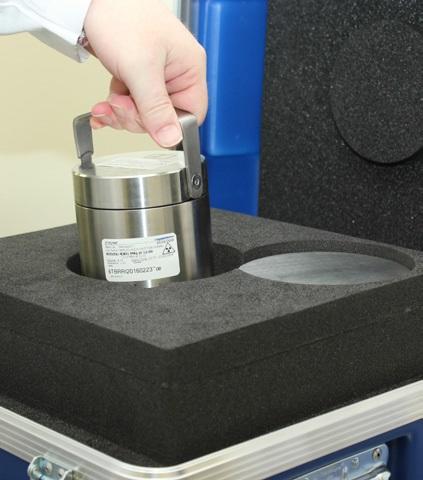
Cyclotron ships first isotopes
Introducing A New Spin-Off Company: Radialis
We celebrated our newest spin-off company this year as Radialis was officially launched in February 2016. The company, founded in partnership with Lakehead University, is the culmination of Thunder Bay Regional Research Institute – Lakehead University Canada Research Chair Dr. Alla Reznik’s research to develop Positron Emission Mammography or PEM, a breast imaging alternative that addresses the shortcomings of mammography. It is also another step towards our goal of developing a cutting-edge medical imaging device industry in Thunder Bay.
Dr. Reznik’s research addresses several issues. Traditional mammography is not sensitive enough to detect breast cancer in its earliest stages, when it is most treatable. Further, X-ray technology can miss tumours in women with dense breast tissue.
There are also emotional factors involved with screening. “Mammography can be uncomfortable causing some women to avoid it,” Dr. Reznik said. “Also, women can endure days or weeks of waiting for the results of follow-up biopsies on suspicious lesions.”
Radialis will develop next-generation PEM imaging systems specifically designed for lower-dose imaging of breast cancer. Since PEM uses molecular imaging, it is able to detect extremely small tumours based on their metabolic activity. This can be important for monitoring the tumour’s responsiveness to treatment. By lowering the radiation dose for molecular imaging, it would make PEM safer for younger women at high risk of breast cancer that may be tested more often.
“It is important to keep Radialis in Thunder Bay,” Dr. Reznik said. “It makes sense from a research perspective to keep it near our Research Institute and the Thunder Bay Regional Health Sciences Centre. It is also important because of the community support we have received – Radialis belongs in Thunder Bay.”
Radialis is now one of two companies in the budding medical device industry in Thunder Bay, joining XLV Diagnostics Inc., which was formed in 2011 by Thunder Bay Regional Research Institute. XLV Diagnostics Inc. will produce low cost digital mammography instruments and is currently completing its first clinical prototype.
Medical device manufacturing may be new to Thunder Bay, but in Ontario it is a $10+ billion industry. Our industry is growing thanks in large part to government partners including the Northern Ontario Heritage Fund Corporation, FedNor, the City of Thunder Bay, and other partners including MaRS Innovation and the Thunder Bay Regional Health Sciences Foundation. Dr. Reznik’s PEM research was also directly funded by contributions from the Canadian Breast Cancer Foundation and the Ontario Research Fund.
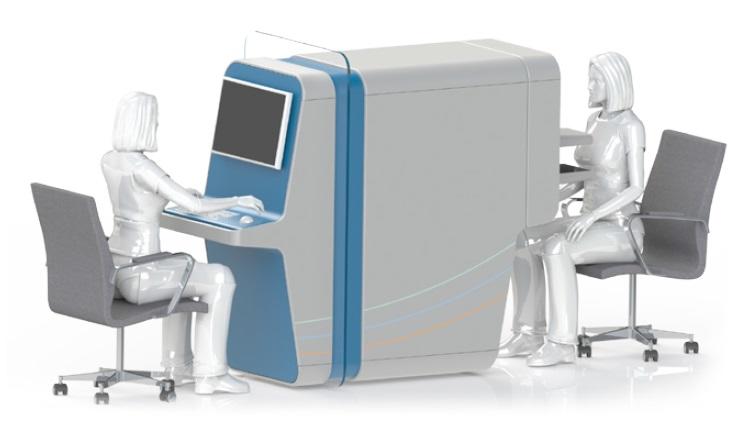
Radialis: A new spin-off company
2015-2016 Measures of Scientific Excellence
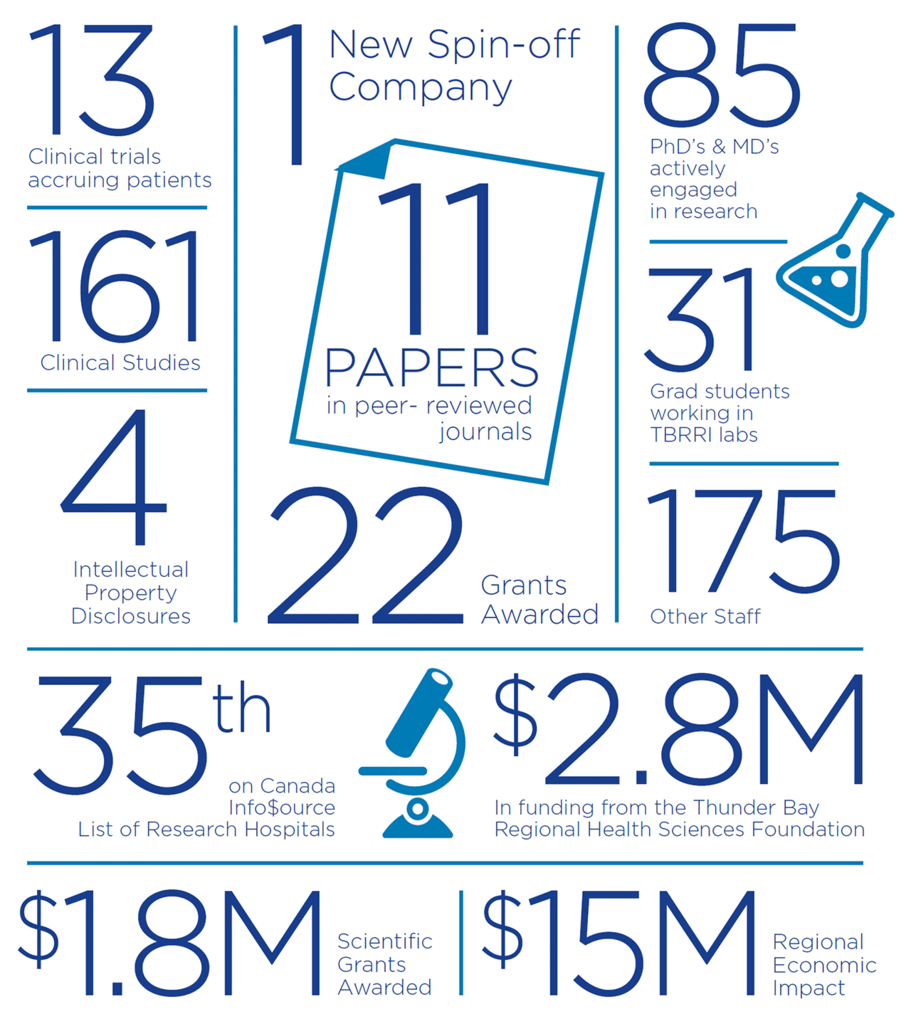
Financial Statements
| Principal Investigator |
Grant | Title | Amount | Term |
|---|---|---|---|---|
| Alla Reznik | Discovery 2014 | Polycrystalline Lead Oxide (PbO) Photoconductor: Physics and Application in Direct Conversion X-Ray Medical Imaging Detectors | $140,000.00 | 5 years |
| Boguslaw Tomanek | Discovery 2014 | The Development of Low-Cost Magnet for MRI | $160,000.00 | 5 years |
| Naana Jumah | Clinical Innovation Opportunities Fund 2015 | Hearing Our Voices: Indigenous Women's Reproductive Health Curriculum | $50,000.00 | 2 years |
| Ingeborg Zehbe | Discovery 2014 | Virus-Host Interactions in the Context of Natural Human Papillomavirus Type 16 E6 Gene Variants | $340,000.00 | 5 years |
| Laura Curiel | Discovery 2014 | Enhancing High Intensity Focused Ultrasound Molecule Delivery | $95,000.00 | 5 years |
| Jubin Payandeh | Research R.E.D. Fund | The Effects of Cognitive Impairment Following a Total Hip or Knee Arthroplasty on the Quality of Life | $9,802.00 | 1 year |
| Ingeborg Zehbe | Bridge Grant | A Collaborative Network to Develop Commuunity-Created Cervical Cancer Education and Screening Strategies for First Nations Women in Northwest Ontario | ($100,000.00) requested |
1 year |
| Mitch Albert | 2014 Transformational Research | Novel Technology for Early Detection of Alzheimer's Disease - Clinical Prototypes | $300,000.00 | 1 year |
| Naana Jumah | Research Assistant Internship | Internship | $27,000.00 | 1 year |
| Shayna Parker | OBI Grant 2015 | Re: Stroke Patients with Hand Function Recovery | $50,000.00 | 1 year |
| Samuel Pichardo | MScPoP 2015 | Novel, Efficient, Phased Array Ultrasound Transducer | $69,997.00 | 1 year |
| Vineet Johnson | Student Support Funding 2015 | Impact of Hand Training Program in Chronic Stroke Survivors: Sensori-Motor, Function and Quality of Life | $10,000.00 | 1 year |
| Naana Jumah | 2014 Graham Farquharson Knowledge Translation Fellowship - additional funding | Treatment of Uterine Fibroids with Magnetic Resonance Guided Focused Ultrasound | $150,000.00 | 1 year |
| Nandini Sachdeva | Research R.E.D. Fund 2015 | Exploring A Relationship Between Postoperative Delirium and Quality of Life Following Total Joint Replacement | $10,000.00 | 1 year |
| Ayman Hassan | AFP Innovation Fund 2015 | Testing of Hyperpolarized Gas MRI based-Xenon Cage Amyloid Ligand (XCAL) Biosensor on Alzheimer's Disease Model | $48,970.40 | 2 years |
| Birubi Biman | AFP Innovation Fund 2015 | Comparison of Xenon MRI and Inert Fluorinated Gas MRI for Lung Diseases | $49,265.40 | 2 years |
| Geoffrey Davis | AFP Innovation Fund 2015 | Tele-palliation, Managing symptoms while providing quality patient care in the home environment by video | $48,756.00 | 2 years |
| Hassan Hassan | AFP Innovation Fund 2015 | Determining outcome in coblation technology use in endoscopic sinus surgery | $49,992.00 | 2 years |
| Michael Scott | AFP Innovation Fund 2015 | Standardization of Processes with the Regional Critical Care Response Program: Enhancing Care for Critically Ill Patients in Northwestern Ontario | $50,000.00 | 1 year |
| Birubi Biman | Clinical Innovations Opportunity Fund - 02 2016 | Association Between the Presence of Loculation & the Concentration of LDH and Total Protein in Exudative Pleural Effusions Fluid | $40,917.00 | 1 year |
| Kurt Droll | Clinical Innovations Opportunity Fund - 02 2016 | Evaluating the Role of the Oral Health Assessment Tool to Identify Dental Pathology in the Total Joint Arthroplasty Population | $44,844.00 | -- |
| Wesley Fidler | Clinical Innovation Opportunities Fund - 02 2016 | Physical Approaches to the Management of Fibromkmyalgia - A Multidisciplinary Approach | $50,000.00 | 2 years |
| Kevin Ramchandar | Clinical Innovations Opportunity Fund - 02 2016 | Hyperpolarized Noble Gas Detection of Radiation Induced Lung Injury | $49,573.00 | 2 years |
| Total | $1,844,116.80 | |||
